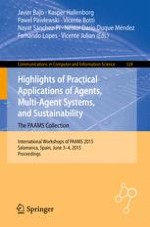2015 | OriginalPaper | Chapter
On the Joint Modeling of the Behavior of Social Insects and Their Interaction with Environment by Taking into Account Physical Phenomena Like Anisotropic Diffusion
Authors : Nicolas Cazin, Aymeric Histace, David Picard, Benoît Gaudou
Published in: Highlights of Practical Applications of Agents, Multi-Agent Systems, and Sustainability - The PAAMS Collection
Publisher: Springer International Publishing
Activate our intelligent search to find suitable subject content or patents.
Select sections of text to find matching patents with Artificial Intelligence. powered by
Select sections of text to find additional relevant content using AI-assisted search. powered by
